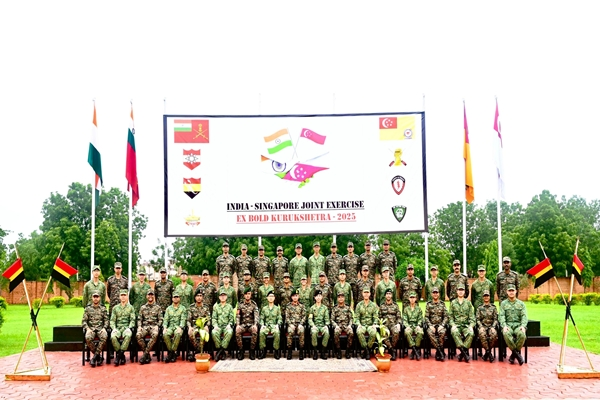SHAPE 2025: First-ever Armed Forces National Conference
- TPP

- Jul 28
- 2 min read

The Department of Hospital Administration at Army Hospital Research & Referral (AHRR), New Delhi, successfully organised the first-ever Armed Forces National Conference, titled SHAPE 2025: Sustainable Hospital Architecture, Planning, Infrastructure and Equipment, on July 26–27, 2025. This pioneering Continuing Medical Education (CME) event witnessed enthusiastic participation from over 275 experts across the Armed Forces and civil domains, including hospital administrators, doctors, nurses, engineers, and architects. These stakeholders came together to deliberate on the challenges, opportunities, and future roadmap for building sustainable, resilient, and patient-centric hospital infrastructure in India.
SHAPE 2025 comes at a critical juncture, as India marches towards the centenary of its independence under the visionary Viksit Bharat@2047 initiative—a national agenda that aims to create a developed, inclusive, and future-ready India by the year 2047.
SHAPE 2025 served as a unique platform that brought together stakeholders from the military, civil, and private sectors to collaboratively shape a unified vision for healthcare infrastructure that is not only functional but also environmentally conscious and technologically enabled. Moving beyond traditional, blueprint-based hospital planning, the conference focused on designing infrastructure that is contextually aligned—that is, tailored to local geographical, social, and environmental conditions—and capable of supporting both routine healthcare delivery and emergency response.
A key theme that emerged from the discussions was that sustainability in healthcare must be seen as a strategic necessity rather than a design choice. It plays a crucial role not just in reducing environmental impact, but also in enhancing national preparedness, promoting health equity (fair and inclusive access to healthcare services), and ensuring patient safety.
In this context, the conference outlined a comprehensive framework for integrating green technologies into healthcare infrastructure. These include the use of solar energy, rainwater harvesting systems, disaster-resilient design features (infrastructure that can withstand natural calamities), and zero-emission facilities. There was also strong emphasis on aligning with established standards such as GRIHA ratings (Green Rating for Integrated Habitat Assessment—a national rating system for green buildings), obtaining CFEES certification (Centre for Fire, Explosive and Environment Safety—certifying infrastructure safety and environmental compliance), and promoting healing architecture, which refers to ergonomically designed spaces that reduce patient stress and improve recovery.
By fostering inter-sectoral collaboration and knowledge sharing over two days, SHAPE 2025 laid the foundation for what could evolve into a national doctrine on Sustainable Hospital Infrastructure, Architecture, Planning, and Equipment Management. The event was more than just a conference; it marked a turning point in the way we envision hospitals—not merely as static buildings but as climate-conscious, people-centric ecosystems that contribute actively to a resilient and health-secure India.
With this initiative, the Armed Forces have set a new benchmark in healthcare transformation. The Department of Hospital Administration at AHRR has taken a vital step toward reimagining healthcare delivery systems, aligned with the long-term aspirations of Vision 2047. SHAPE 2025 stands as a testament to the power of visionary planning, inter-disciplinary cooperation, and sustainable innovation in shaping the future of Indian healthcare.
Explore more on UPSC Content
Click for Daily Quotes:
Stay updated with the latest news by joining our Telegram channel – The PRESS Pad , and follow us on Instagram



Comments